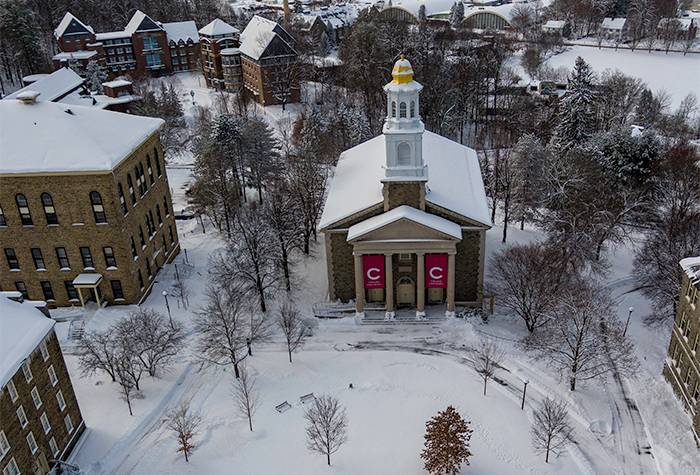Colgate University received an all-time record number of applications for admission, shattering all previous records in the history of this two-century–old liberal arts college.
As the deadline for applying to the Class of 2025 closed on Jan. 15, a total of 17,392 prospective students applied for admission — a remarkable 102.6% increase over the previous year. This record year also includes major growth in applications from students of color, students in the Southeast, and those hailing from countries outside of the United States. An early data review also points to an overall increase in the academic quality of applications compared to previous years.
For a sense of scale, the previous application record was set in 2019, when Colgate received 9,951 applications for the Class of 2023.
“Colgate continues to distinguish itself as a top choice for intellectually sophisticated students seeking academic rigor and a transformative residential educational experience,” said Colgate President Brian W. Casey. “These record application numbers are a tribute to our admission staff, who work tirelessly to raise awareness of the incredible opportunities on this campus, and to the faculty, who care so deeply about their students and their success.”
Jones and Wood Family Vice President for Admission and Financial Aid Gary Ross said he expected to see some increase in applications this year due to a number of initiatives set in motion during the past two years, but to see an increase of greater than 100% was a shock.
“I am quite certain no one on our team was thinking, even in their dreams, that we would experience a 100% increase in applications, year over year,” said Ross. “I do know the response internally from the admission team has been sensational. Everyone is ready to step up and do what needs to be done to give each of these applications a holistic review. It is just outstanding.”
Ross said a number of factors have led to the increase, including changing how Colgate seeks out prospective students early in the college search process, moving to a pilot test-optional policy, introducing a No-Loan Initiative for families with an income of $125,000 or less, broad national media coverage of how the University has handled a return to in-person learning during the pandemic, and a new partnership with QuestBridge.
Dean of Admission Tara Bubble said she has heard many opinions about why the application increase was so significant this year, but she firmly believes it all comes down to data.
“I’ve been trying to figure out how to concisely explain the tremendous amount of work and planning that went into this increase,” Bubble said. “Admission has been strategically changing our operation for the past two years. This year is when all the stars came into alignment, and we’re seeing the benefit of it. It was all about managing our prospective student base and building on the number and quality of interactions. This year, we absolutely saw that that paid off.”
Dean Ross said another factor was Colgate’s quick response in March 2020 to online recruiting.
“The offices of admission and communications teamed up to begin very successful programs for virtual outreach to then high school juniors,” Ross said. “It worked.”
Associate Dean and Communication Coordinator for Admission Dan Shanley said Colgate hosted more than 120 webinars based on topics ranging from financial aid and food at Colgate, to what it’s like in the classroom and enjoying the winter in central New York.
“Colgate representatives also transitioned from traditional in-person school visits and college fairs to participate and meet with students during more than 1,000 virtual events throughout the fall. Admission officers met with about 7,800 prospective students through virtual engagement,” Shanley said. “While we missed the opportunity to connect with prospective students and colleagues in person, our team was more than ready and willing to ensure that those connections still happened — and with the geographic barriers of physical travel broken down, those conversations happened at more schools, in more regions, and with more students than ever before.”
